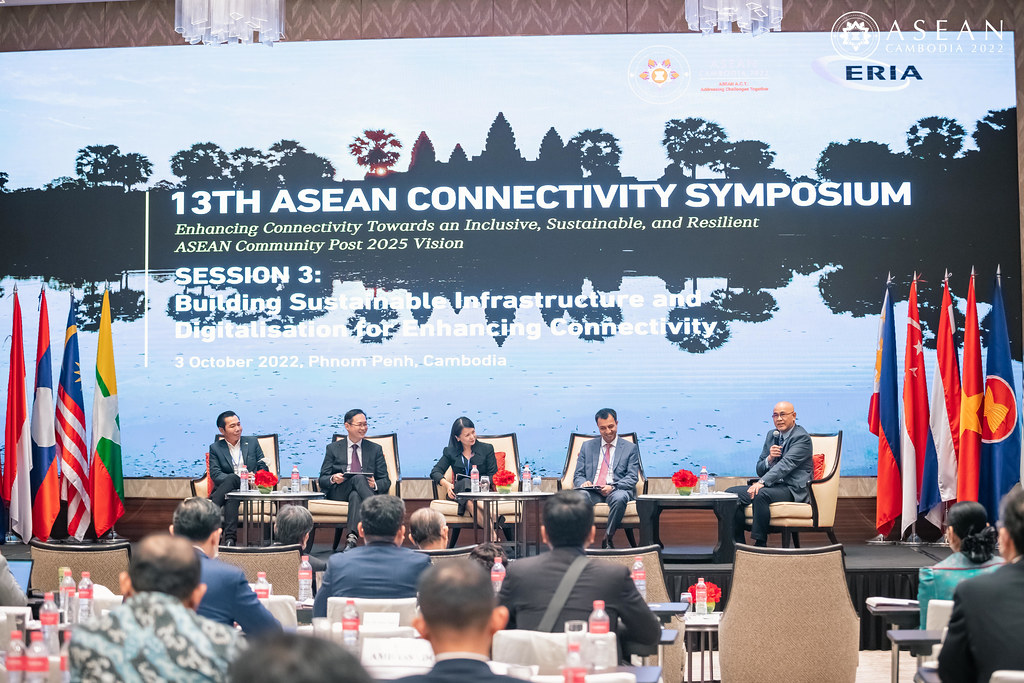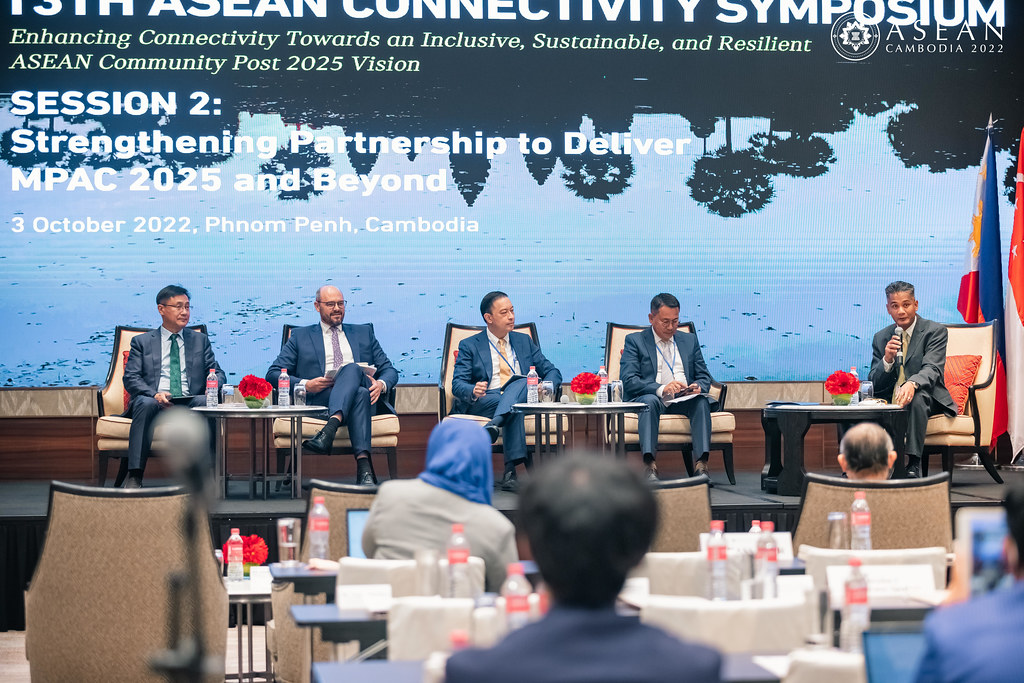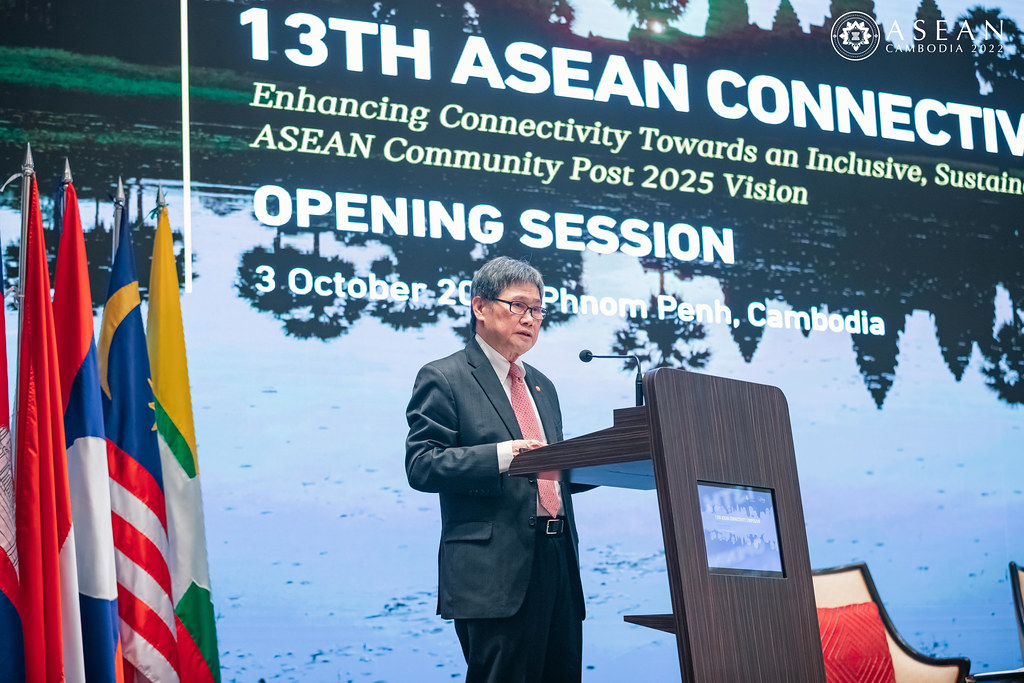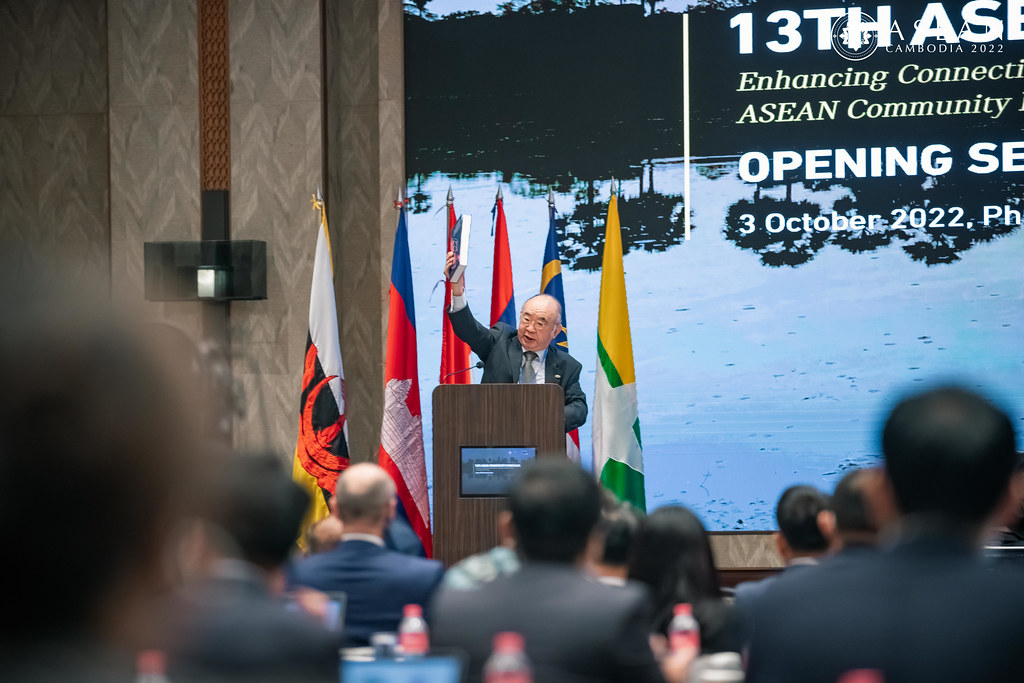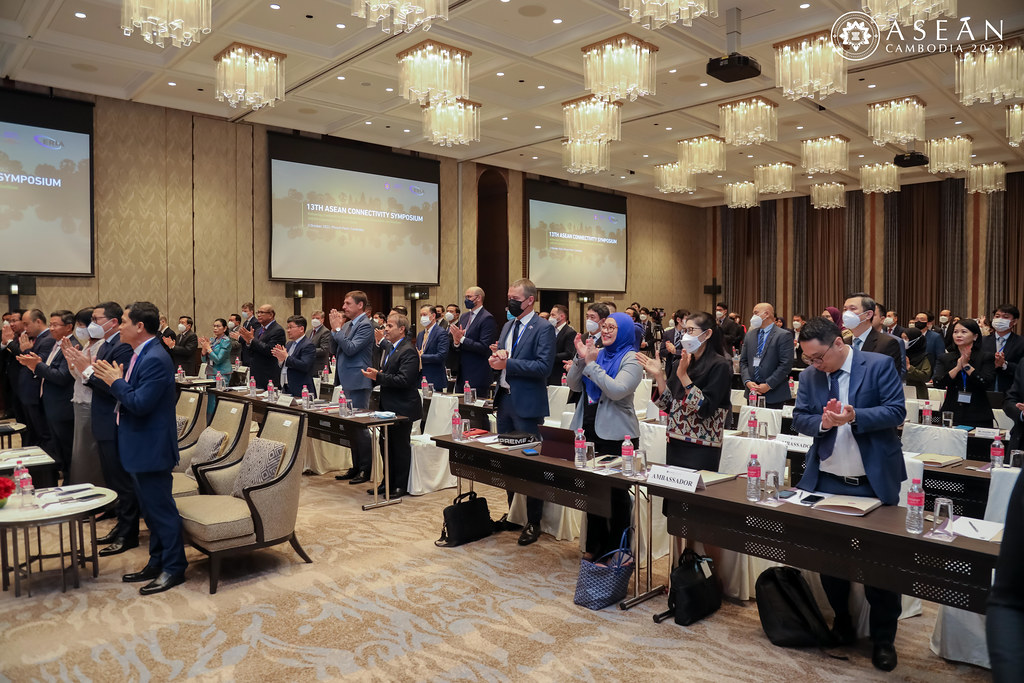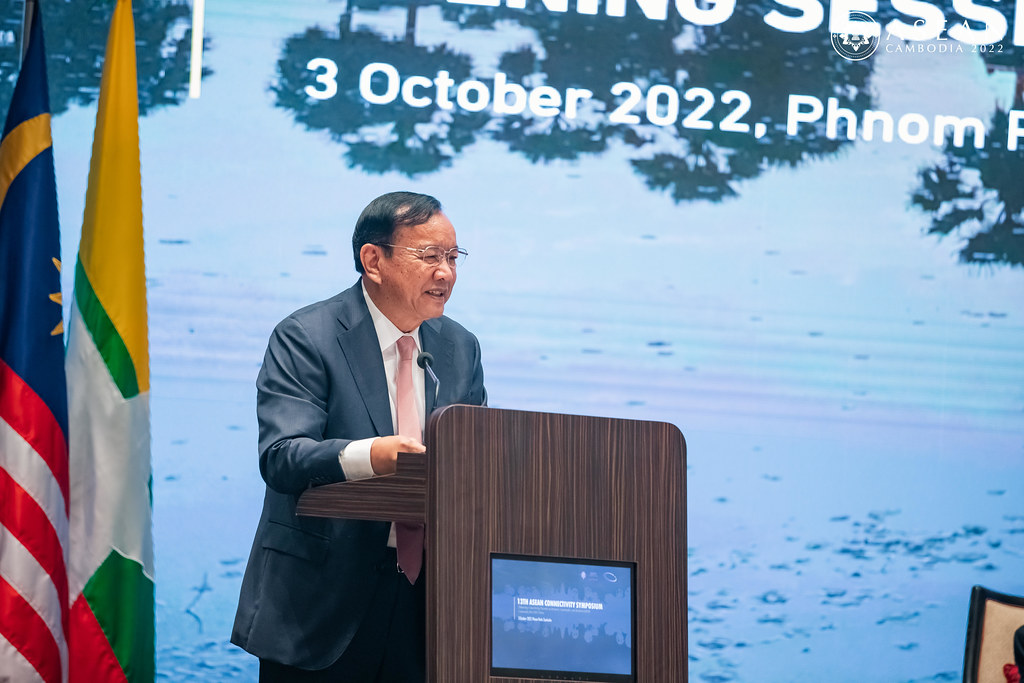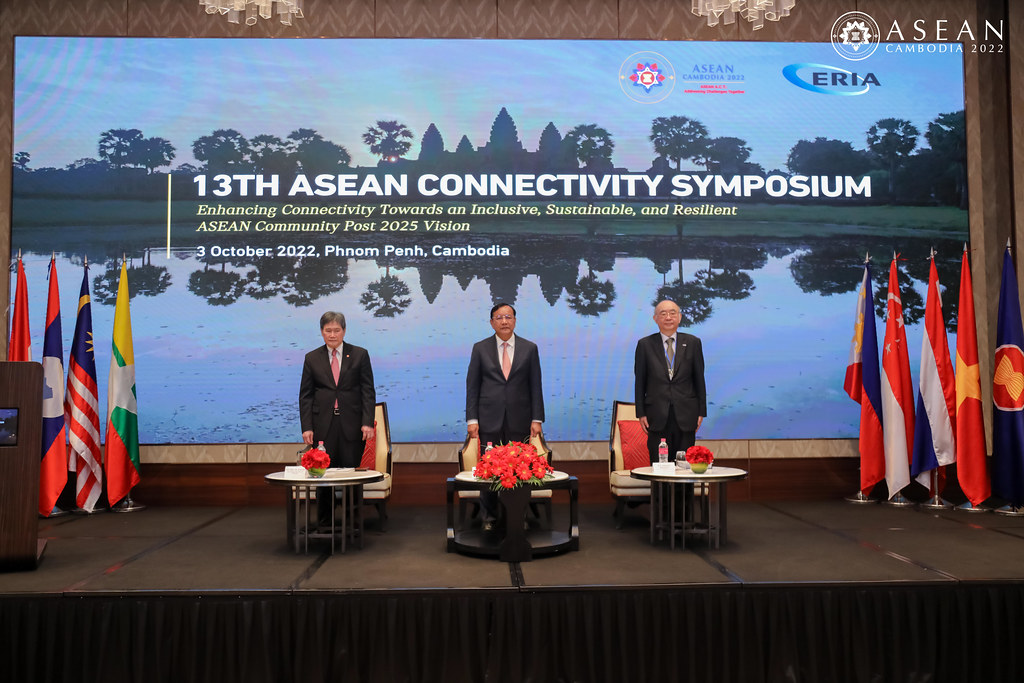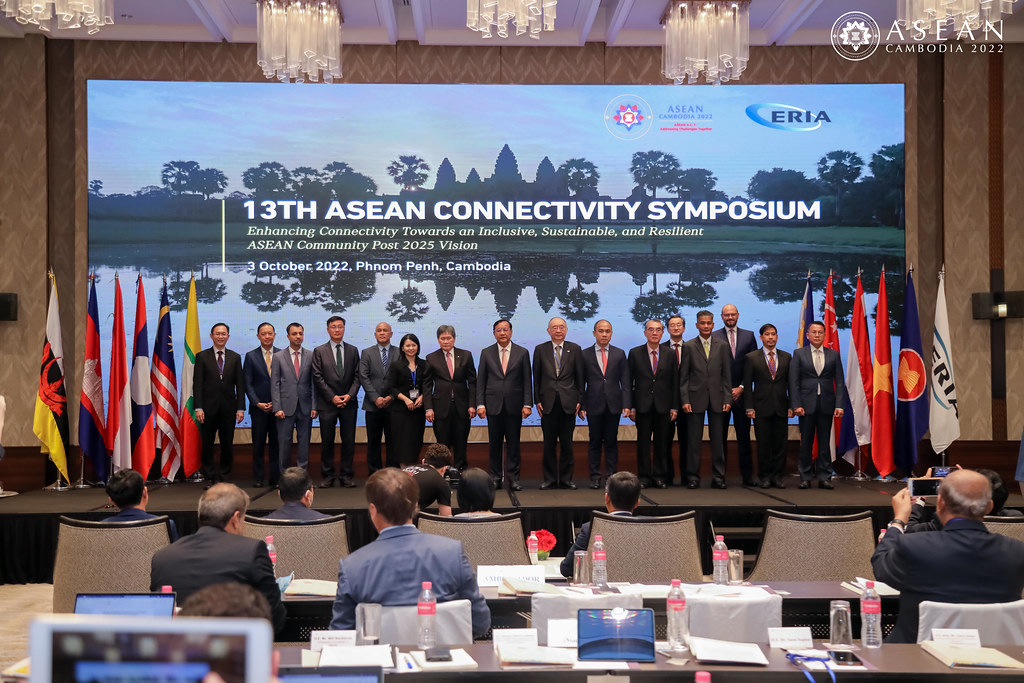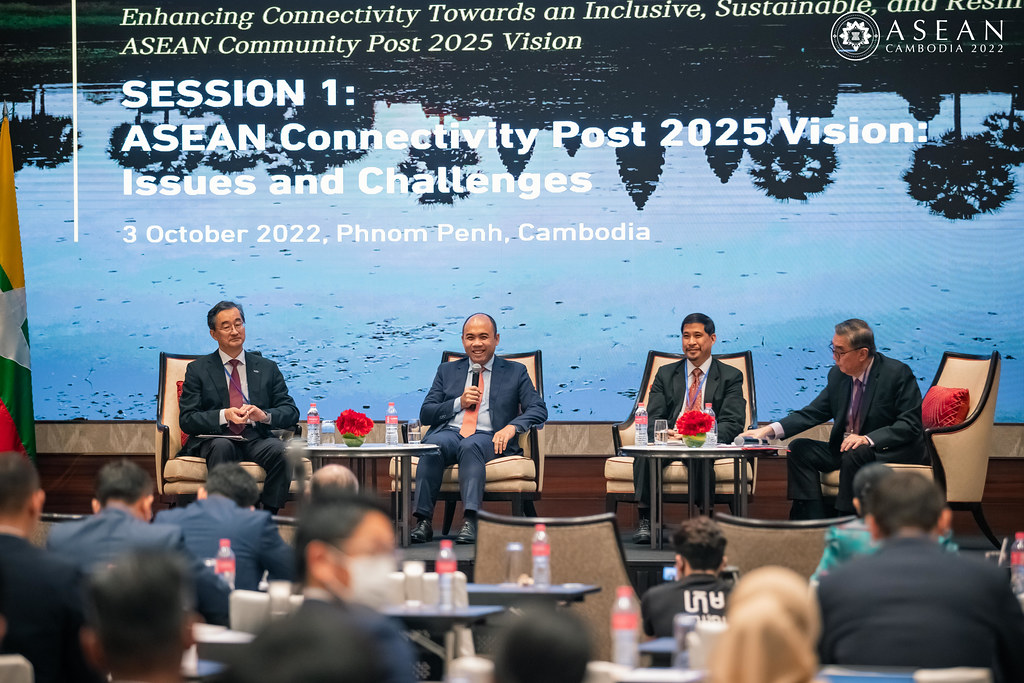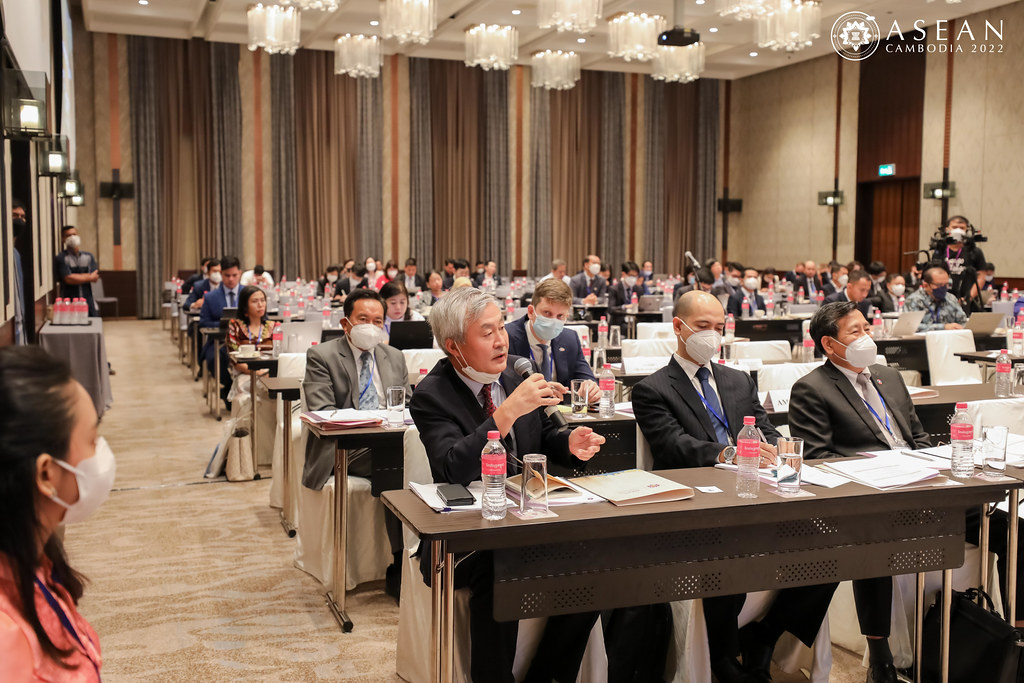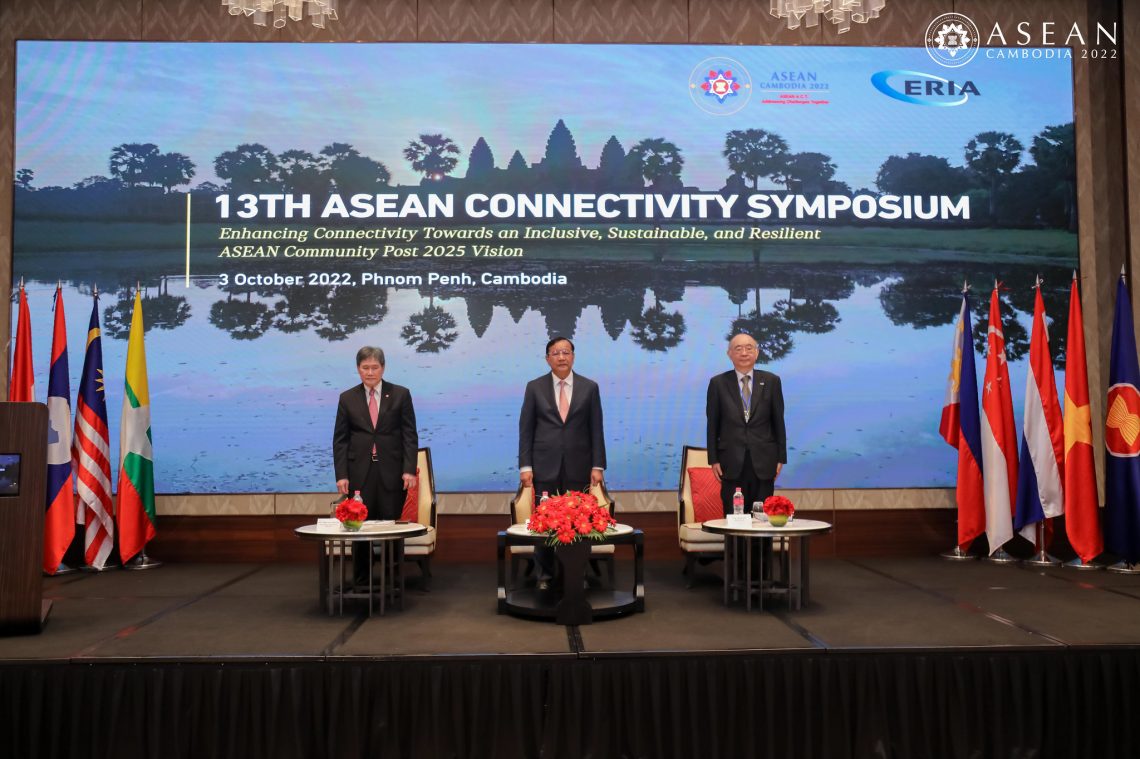
PHNOM PENH, 4 October 2022 – The Royal Government of Cambodia hosted the 13th ASEAN Connectivity Symposium in Phnom Penh yesterday. Being the first ASEAN Connectivity Symposium held in-person after the lifting of the COVID-19 travel restriction, the event brought together over 160 participants, including ASEAN Connectivity Coordinating Committee (ACCC) Members, representatives from ASEAN Sectoral Bodies, Dialogue Partners, External Partners, multilateral organisations, and the private sector.
With the theme of Enhancing Connectivity Towards an Inclusive, Sustainable and Resilient ASEAN Community Post 2025 Vision, the Symposium engaged panellists from various backgrounds, from governments and think tanks to consulting firms and multinational development banks.
In his keynote address, Deputy Prime Minister and Minister of Foreign Affairs and International Cooperation of Cambodia, Prak Sokhonn emphasised the critical role of connectivity in supporting recovery efforts and building resilience, particularly on the region’s supply chain, and stronger partnerships with broader stakeholders.
“The future of our region will depend on our regional competitiveness, which can only come from a well-connected region that acts in unison”, he stressed. As ASEAN, the approach is all about getting the maximum synergy from these initiatives, the so-called “Connecting the Connectivities” approach to extract the necessary added value.
He further reminded that the Regional Comprehensive Economic Partnership has just entered into force this year. This mega free trade will drive ASEAN’s regional economy to greater heights. There is a need to align the Master Plan on ASEAN Connectivity (MPAC) 2025 so that it can act as the nexus linking various strategies and initiatives in the region to support for that matter our inclusive, sustainable, and resilient ASEAN.
Secretary-General of ASEAN Dato Lim Jock Hoi highlighted the need for ASEAN to be resilient, adaptable, and responsive to ever-changing needs. “While we continue to plan for the future, we need to build a dynamic link between thinking about the future and taking actions in the present,” he added. He further shared that ASEAN must work with all partners in the short-, medium-, and long-term, and demonstrate that the resources they invested in the region will benefit them as much as it benefits ASEAN.
Against the backdrop of post-pandemic recovery, the Symposium exchanged views on current issues and emerging trends as well as challenges ASEAN encounters in developing an ASEAN Connectivity Post 2025 Agenda.
It also discussed ways to strengthen partnerships on ASEAN Connectivity with various stakeholders, and how sustainable infrastructure, smart cities development, and digital innovation can shape and enhance the evolving regional network, contributing towards building an inclusive, resilient and well-connected ASEAN Community.
The President of ERIA Professor Hidetoshi Nishimura, in his remarks, accentuated the importance of digital connection in the implementation of MPAC 2025. He made a reference to ERIA’s work on the Comprehensive Asia Development Plan 3.0, which highlights strategies for establishing a more integrated, innovative, inclusive and sustainable economy in ASEAN and East Asia by promoting physical and digital connectivity in the region. “I am highly confident that this CADP 3.0 will contribute to deepening ASEAN’s connectivity beyond 2025″, he said.
The ASEAN Connectivity Symposium is an annual flagship event inaugurated in 2010, and it continues to serve as a platform to engage stakeholders to identify potential areas of cooperation to enhance the implementation of MPAC 2025 and the wider ASEAN Connectivity agenda.
***

